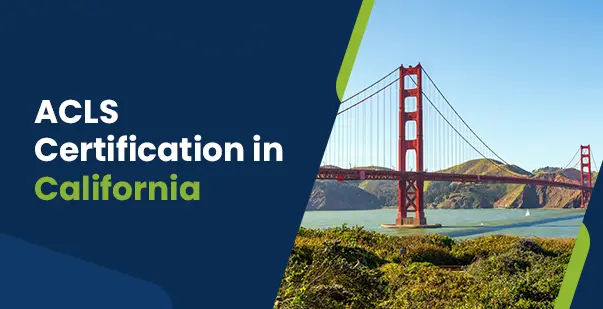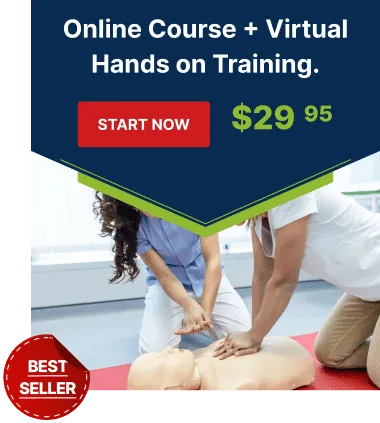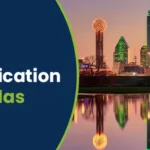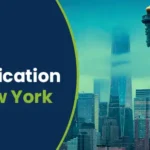In June 2025, a Hands-Only CPR and AED free training event was hosted at the El Camino Country Club in Oceanside. The event was inspired by the actual life story of a 57-year-old club member who suddenly experienced cardiac arrest while playing a match. Bystander cardiopulmonary resuscitation (CPR) and a prompt automated external defibrillator (AED) response saved his life and led to a community-wide initiative to educate more people with these lifesaving skills. That’s the real-world impact of being prepared. That’s where ACLS certification in California becomes your professional superpower.
Smart healthcare workers don’t wait for emergencies to realize they need better training. They get certified fast, stay current, and save lives. So, keep reading to learn exactly how California professionals can earn ACLS certification efficiently.
Master ACLS Now
Get ACLS certified with confidence
Is ACLS Certification Required in California?
California does not require ACLS training in California by state law. But the reality in healthcare is entirely different. The majority of California employers consider ACLS certification as a must. Hospitals cannot afford to deploy critical department staff without preparation. You require an ACLS certification in California if you are:
- Emergency department (ED) nurses and doctors
- Intensive care unit (ICU) personnel
- Operating room staff and anesthesia professionals
- Cardiac catheterization lab technicians
- Paramedics and flight nurses
- Code blue team leaders
Smart Tip: Experienced professionals often choose online options for renewals. New learners typically benefit more from hands-on classroom experiences.
| Read More: ACLS Certification New York |
How to Get ACLS Certified in California: Step-by-Step Process
According to the data from the Sudden Cardiac Arrest Foundation, nearly 42% of out-of-hospital cardiac arrests in California see bystander CPR, but that number needs to be higher. If you are certified in ACLS, you’ll be doing more than calls. You will be delivering advanced care that saves lives. So, here is the complete roadmap used by thousands of California healthcare workers.
Step 1. Verify Your BLS Foundation
ACLS builds on Basic Life Support (BLS) skills. The American Heart Association (AHA) requires proficiency in CPR, AED operation, and basic airway management. Most California training centres require a current BLS Provider card. Renew before it expires.
Step 2. Research Employer-Specific Requirements
Healthcare facilities have different standards. Some accept only AHA courses; others approve certain online providers or require extra certifications. Check with your HR department or manager before enrolling.
Step 3. Select Your Training Provider
California offers many ACLS courses through hospitals, colleges, fire stations, online providers, and dedicated training organizations. Choose a nationally compliant provider.
Step 4. Complete Pre-Course Requirements
Most programs require preparation work. This involves reading assignments, online modules, and self-tests. Don’t miss out on this step. Pre-course work involves Electrocardiogram (ECG) interpretation, ACLS algorithms, and emergency meds. Good preparation maximizes class time.
Step 5. Master Hands-On Skills Through Practice
Training includes cardiac arrest scenarios, arrhythmia management, and team coordination. Instructors use simulation equipment or AR/VR for realistic practice.
Step 6. Pass Written and Practical Evaluations
You must pass both a written exam and a practical assessment covering ACLS protocols, medications, and leadership skills. Retesting is often available.
Step 7. Receive Your Official Certification
On completion, you’ll receive an official ACLS provider card, often as a digital eCard. Keep copies for job and compliance purposes.
Read More: ACLS Certification Chicago
How Long Is ACLS Certification Valid in California?
ACLS certification remains valid for two years. California follows the same AHA standard as every other state. Your certification expires on the last day of the expiration month. Most employers require renewal before expiration, not after. Some California-specific timing considerations are as follows:
- Peak renewal seasons (fall and spring) might have fewer course offerings.
- Coastal regions usually have more frequent courses than inland areas.
- Large hospital groups tend to offer on-site renewal courses.
- More advance planning might be needed in rural areas with fewer choices.
Pro Strategy: Book ACLS renewal in California 2-3 months in advance. This cushion avoids scheduling conflicts and maintains ongoing compliance.
Read More: ACLS Certification San Diego
Cost of ACLS Certification in California
California ACLS training fees differ greatly depending on the location, format, and training provider. So, you should compare the costs for various course formats to begin with. You will then be able to plan your budget more effectively and select the appropriate course based on your needs.
The best cost-saving strategies for completing an ACLS certification in California include:
- You can check for group discounts offered for hospital employees.
- Some employers pay back certification costs.
- Online renewals are cheaper than initial certification.
- Compare overall costs, such as materials and travel charges.
California’s higher cost of living affects training prices. However, the investment pays dividends through career advancement and salary increases.
Also Read: Healthcare Simulation Week – Advanced ACLS Scenarios for Critical Training
Why Choose ACLSNow.com for ACLS Certification in California?
According to the data from USAFacts, in California, 65,471 people died from heart disease in 2021. This was the highest total number of deaths from any state that year. Therefore, the Golden State needs healthcare heroes with advanced cardiac skills. Therefore, you need training that matches that pace without sacrificing quality, and ACLSNow.com delivers exactly that. So, here’s why you should choose us:
Expert-Crafted, Self-Paced Learning
The course includes comprehensive chapters on advanced airway management, cardiac algorithms, pharmacology, and team leadership curated by experts in the field. The majority of California healthcare professionals finish the entire course in 3-4 hours. The flexible design accommodates grueling shift work schedules and personal obligations.
Immediate Certification Recognition
Graduates receive two-year ACLS certification meeting Emergency Cardiovascular Care (ECC) guidelines. Your digital provider card becomes available instantly after passing the final exam (unlimited attempts included). Download, print, or forward your certification immediately for credentialing or employment purposes.
Bonus BLS Course Included
Each ACLS registration comes with a free Basic Life Support course. This keeps your core skills up to date while delivering the most training for your investment. Both certifications share the same standards required by California employers.
Transparent, Competitive Pricing
Priced at $119 (previously $169), the course comes at an unbeatable value. No surprise charges or hidden fees at checkout. Compare this with the standard in-person prices in California at $275-425. The difference is significant without sacrificing educational quality.
Real-World Scenario Focus
You’ll practice through cardiac arrest algorithms, stroke management strategies, acute coronary syndromes, and team coordination issues. Scenarios are representative of typical California hospital, clinic, and emergency service situations. Using innovative AI-powered AR/VR tools, this hands-on training delivers skills you can immediately apply in your workplace.
Get ACLS Certified Today in California!
California’s healthcare system depends on skilled professionals ready for cardiac emergencies. With one in every five American dying of heart disease, your advanced skills are not just credentials, they’re lifelines. Don’t wait for emergencies to expose training gaps. Opt for quality ACLS certification in California that suits your timeline and budget. Spend time preparing well.
The finest healthcare workers never quit learning. They foresee needs, prepare extensively, and act confidently when lives are at stake. Are you ready to become part of California’s top emergency response professionals? Your certification is waiting. Start now!
References:
